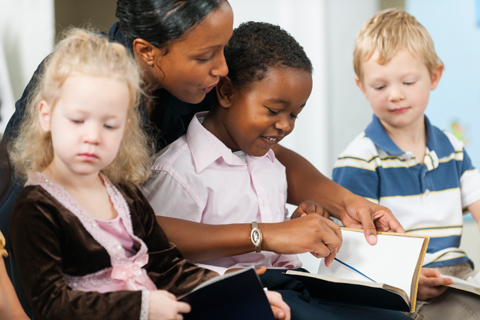By Margaret F. Williamson and Roberta L. Watson, New Orleans Baptist Theological Seminary
In this article, Williamson and Watson consider how students absorb and retain information. They also explain how that information can influence an individual learning strategy for each student.
Summary
Over the years, educators have asked questions about how people learn. This article is the second in a series of three that provide updated information on the impact of learning styles on learners.
Kolb Learning Styles
David Kolb defines learning styles as “one’s preferred methods for perceiving and processing information” (Jonassen & Grabowski, 1993, p. 249). At the center of Kolb’s theory are two fundamental concepts. The first concept is how learners grasp a new experience or receive new information. The second concept is how learners process or transform the learning experience (Claxton & Murrell, 1987).
Using these concepts as his core, Kolb’s research has concentrated around a four-stage experiential learning cycle that includes four adaptive modes of learning: concrete experience, reflective observation, abstract conceptualization, and active experimentation. Concrete experience (feeling) and abstract conceptualization (thinking) describe how a learner perceives environments and experiences, and are viewed as opposite ends of the learning continuum. Reflective observation (watching) and active experimentation (doing) describe how information is processed and are also viewed as opposite concepts. Each mode has unique aspects and can be defined separately (Claxton & Murrell, 1987).
- Abstract individuals comprehend information conceptually and symbolically.
- Concrete individuals rely on or apprehend by the tangible, felt qualities of immediate experience.
- Active individuals extend the environment by external manipulation.
- Reflective individuals exhibit intention by internal reflection on the external world.
Kolb’s findings support the theory that every individual draws from each of these areas to some extent, although each has a preferred learning style (Willcoxson & Prosser, 1996). Using these two continuums, Kolb determined four learning styles: Divergers, Assimilators, Convergers, and Accommodators.
- Accommodators are best at learning from “hands on” experience (doing and feeling).
- Divergers excel in using imagination and brainstorming, combining concrete experience and reflective observation (feeling and watching).
- Convergers’ dominant learning abilities are focused on finding practical uses for ideas and theories (doing and thinking).
- Assimilators are most adept at logically organizing and analyzing information, building and testing theories, and designing experiments (thinking and watching).
*For more information on the four learning styles click here
Tips for Teaching
McCarthy proposed that a student needed learning experiences in all four of the areas Kolb identified and described this process as a “natural cycle of learning ”. McCarthy’s 4MAT System was developed using Kolb’s four groupings of learners: those who learn by (a) feeling, (b) thinking, (c) doing, and (d) reflecting and watching.
Within each of these areas, McCarthy suggested activities using the left or analytical mode of the brain and the right or intuitive mode of the brain to help learners progress through the natural cycle of learning (McCarthy, 1997).
- Feeling: For those who learn by feeling, McCarthy suggests that the teacher serve as a motivator and witness to students, thereby creating “an accepting climate where the imaginative learner (and all types of learners) can explore ideas without being evaluated too quickly” (McCarthy, 1987, p. 125).
- Thinking: For those who learn by thinking, McCarthy perceives the role of teacher as one who provides information and stresses the need to provide information that is organized.
- Doing: For those who learn by doing, McCarthy describes the role of the teacher as a facilitator and a coach who takes a support position through learning activities.
- Watching: For those who learn by reflecting and watching, McCarthy emphasizes the need for the teacher to serve as an evaluator and mediator who creates “a climate where there is freedom to discover by doing”
Read Part 1: Learning Styles – Teach Like Jesus
Read Part 3: Helping Students Learn How To Learn
—
About The Authors:
Margaret F. Williamson (Ph.D., New Orleans Baptist Theological Seminary) serves as Assistant Professor of Christian Education and Director of Training and Communication of the Extension Center System for New Orleans Baptist Theological Seminary.
Roberta L. Watson (M.A.C.E., New Orleans Baptist Theological Seminary) serves as Research Assistant at New Orleans Baptist Theological Seminary.
Funding for the research project this article was developed from came from the Lilly Endowment, Religious Division.
Learning Styles Research II: Understanding How Learners Prefer to Receive Information is taken from the Christian Education Journal, CEJ: Series 3, Vol. 3, No. 2. Copyright 2006; p 343-360. All rights reserved. Permission granted by Christian Education Journal.
Want to share this article outside of your ministry? Want to post this electronically? Please contact Dr. Kevin Lawson, Editor for permission Editor.cej@biola.edu.
Subscribe to Christian Education Journal: cej.subscriptions@biola.edu







I previously asked, “Where can I find PART 1 of this article? but neglected to indicate which article.
I am referring to the embedded one at the end of your blog “Learning Styles: Teaching Tips”. It popped up when I clicked “DOWNLOAD COMPLETE ARTICLE” called “Learning Styles Part 2”. Kindly email me that article. Thank you so much.